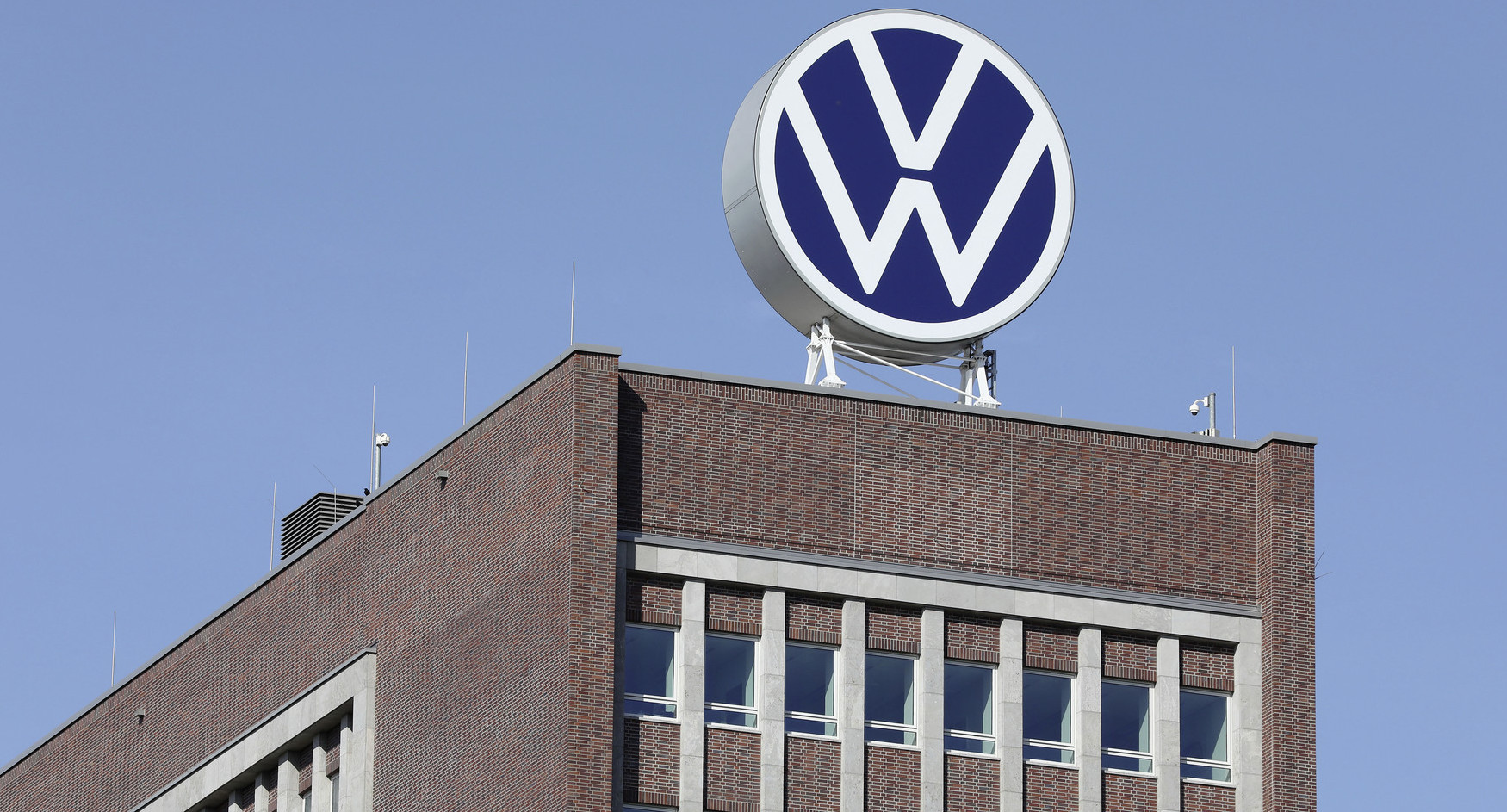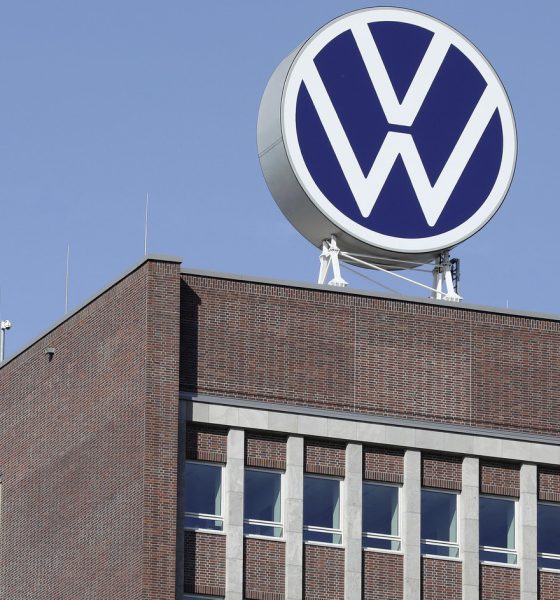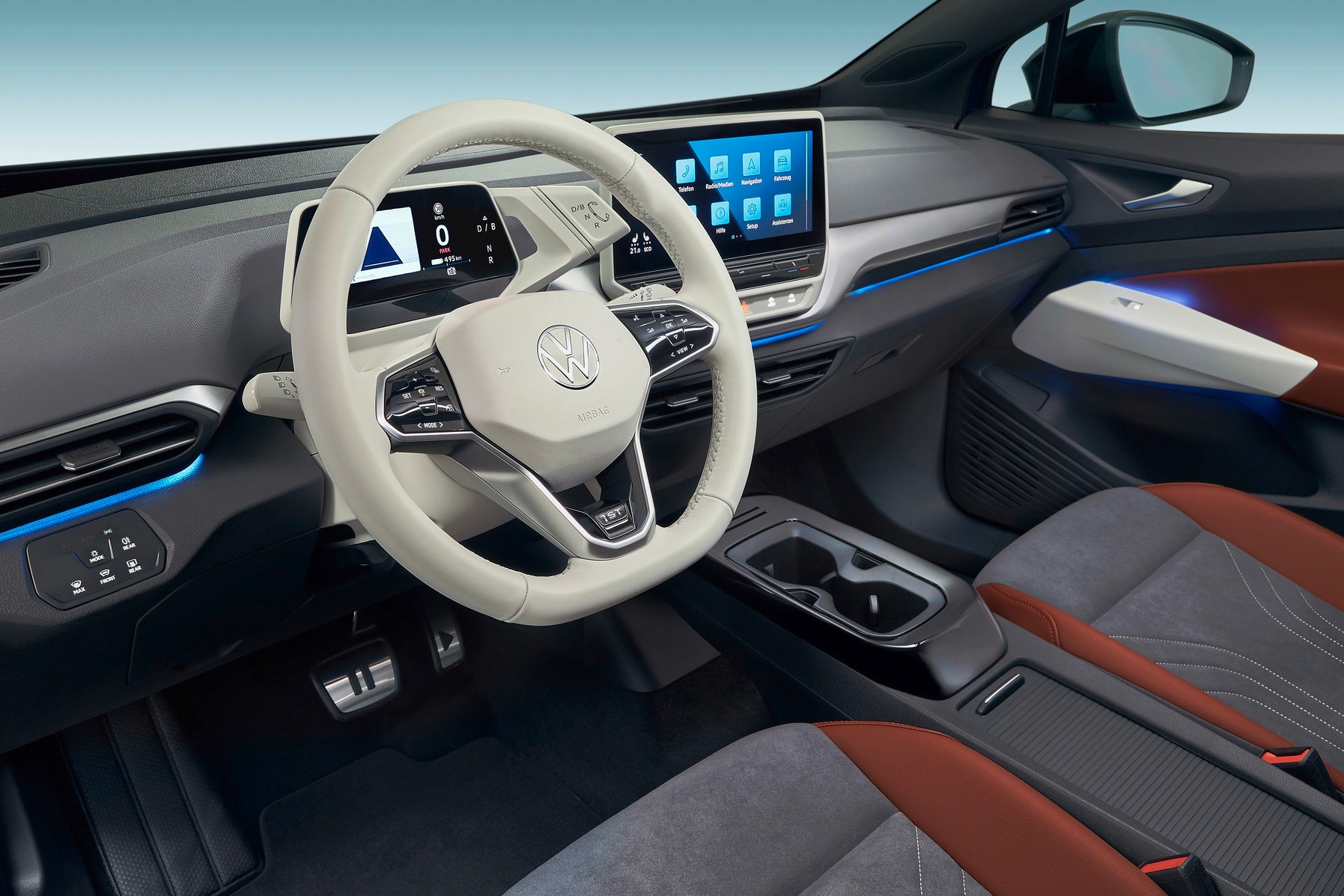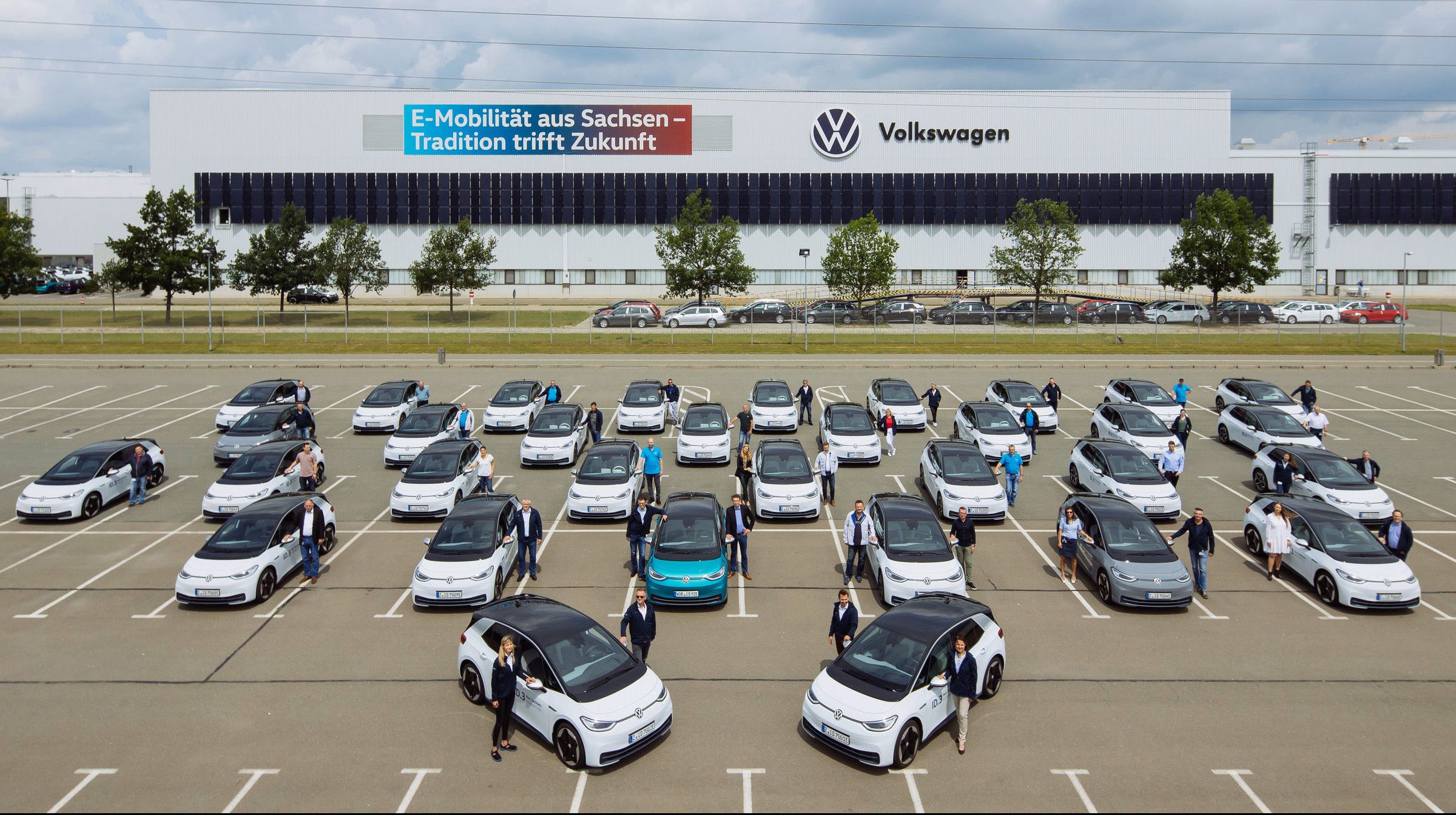

News
Volkswagen’s Power Day: Six new cell plants, new unified battery cell, charging network partnerships
Earlier today, German automaker Volkswagen held its first-ever “Power Day” event. Similar to Tesla’s Battery Day, Volkswagen outlined its plans for reducing the cost of electric vehicles, how it will supply battery cells for its massive EV push, a new “unified” battery cell, and the how company’s charging network is being funded by BP and other European-based energy companies.
Batteries and Cell Production
Every company involved with electric vehicles knows that to reduce the cost of its cars, sourcing batteries is 9/10ths of the battle. Batteries make up a substantial portion of an electric vehicle’s overall cost. With increased battery production and purchasing, EV makers hold the ability to lower the cost of their vehicles overall. Tesla outlined this last September at its own battery-focused event.
Volkswagen’s roadmap isn’t much different than Tesla’s. The company plans to increase cell production in Europe by a substantial margin, developing six new cell factories that will be fully operational by 2030.
“Together with partners, we want to have a total of six cell factories up and running in Europe by 2030, thus guaranteeing security of supply,” Thomas Schmall, Member of the Board of Management of Volkswagen Group for Technology and CEO of VW Group Components, said. The six new factories will produce cells with a total energy value of 240 GWh per year by the time they are finished. Two of the factories will operate in Sweden, with one in Skellefteå and another in Salzgitter. The Salzgitter factory will produce cells for VW’s “high-volume segment” starting in 2025 and will have up to 40 GWh per year of capacity.
Additionally, the company said that it “has decided to refocus the previous plan in relation to cell production and concentrate production of its premium cells in the Swedish gigafactory “Northvolt Ett” in Skellefteå in collaboration with Northvolt.” This factory will begin producing cells in 2023 and will be expanded to a final annual capacity of 40 GWh.

Credit: Volkswagen
New Unified Battery Cell in 2023
Volkswagen’s plan to reduce costs is funneled through battery developments and improvements. Schmall outlined this with the idea of new, more cost-effective cells that will increase range and performance. “This will finally make e-mobility affordable and the dominant drive technology,” Schmall said.
While Volkswagen plans to purchase cells from suppliers, it also plans to create cells in-house within a series of battery production facilities. In 2023, a new, unified cell will be launched and installed in 80% of the Volkswagen group’s electric vehicles. “We will use our economies of scale to the benefit of our customers when it comes to the battery too. On average, we will drive down the cost of battery systems to significantly below €100 per kilowatt-hour,” Schmall added.
“Integration of the Value Chain”
In an attempt to secure the long-term supply of its battery cells to alleviate any concerns over its transition to electromobility, Volkswagen says it will focus on partnerships with selected strategic partners. “The new prismatic unified cell also offers the best conditions for the transition to the solid state cell – the next quantum leap in battery technology, which Volkswagen anticipates for the middle of the decade. The Group focuses consistently on strategic partnerships and efficient use of resources both for batteries and for charging,” VW said. Additionally, the VW Group said it will adhere to its strategic financial targets and will continue to aim for a 6% CAPEX ratio by 2025. It also plans to have a net cash flow of more than €10 billion in its core automotive business.
Charging Network fueled by partnerships with BP, Iberdrola, Enel
Volkswagen isn’t only working on its battery plans. The company also is working on expanding its charging platform by calling upon European power companies to help with the rollout. Partnerships with IONITY and BP will establish 8,000 new charging points throughout Europe. Additionally, 4,000 150 kW chargers will be installed at BP and ARAL service stations in Germany and Great Britain. Spain-based Iberdrola will assist Volkswagen with main traffic route coverage in Spain, and Italian company Enel will help with main and urban motorways in Italy.
Volkswagen says its total investment package for the charging infrastructure will cost around €400 million by 2025 and is looking for other companies to partner with.
In North America, 3,500 fast-charging points will be installed by Electrify America by the end of the year. In China, 17,000 will be installed as well.

Credit: Volkswagen
Planned V2G Capability
While Volkswagen says it intends to “integrate the electric car in private, commercial and public energy systems in the future,” it says that vehicles using the MEB platform will support energy storage capabilities starting in 2022. Bidirectional wall boxes to energy management systems will be developed as well, allowing owners to supply power to residential buildings, businesses, or the general power grid when needed.
Volkswagen’s full Power Day event is available below.
https://www.youtube.com/watch?v=vdnRfNwj1Fg

Elon Musk
Elon Musk’s X will start using a Tesla-like software update strategy
The initiative seems designed to accelerate updates to the social media platform, while maintaining maximum transparency.

Elon Musk’s social media platform X will adopt a Tesla-esque approach to software updates for its algorithm.
The initiative seems designed to accelerate updates to the social media platform, while maintaining maximum transparency.
X’s updates to its updates
As per Musk in a post on X, the social media company will be making a new algorithm to determine what organic and advertising posts are recommended to users. These updates would then be repeated every four weeks.
“We will make the new 𝕏 algorithm, including all code used to determine what organic and advertising posts are recommended to users, open source in 7 days. This will be repeated every 4 weeks, with comprehensive developer notes, to help you understand what changed,” Musk wrote in his post.
The initiative somewhat mirrors Tesla’s over-the-air update model, where vehicle software is regularly refined and pushed to users with detailed release notes. This should allow users to better understand the details of X’s every update and foster a healthy feedback loop for the social media platform.
xAI and X
X, formerly Twitter, has been acquired by Elon Musk’s artificial intelligence startup, xAI last year. Since then, xAI has seen a rapid rise in valuation. Following the company’s the company’s upsized $20 billion Series E funding round, estimates now suggest that xAI is worth tens about $230 to $235 billion. That’s several times larger than Tesla when Elon Musk received his controversial 2018 CEO Performance Award.
As per xAI, the Series E funding round attracted a diverse group of investors, including Valor Equity Partners, Stepstone Group, Fidelity Management & Research Company, Qatar Investment Authority, MGX, and Baron Capital Group, among others. Strategic partners NVIDIA and Cisco Investments also continued support for building the world’s largest GPU clusters.
News
Tesla FSD Supervised wins MotorTrend’s Best Driver Assistance Award
The decision marks a notable reversal for the publication from prior years, with judges citing major real-world improvements that pushed Tesla’s latest FSD software ahead of every competing ADAS system.

Tesla’s Full Self-Driving (Supervised) system has been named the best driver-assistance technology on the market, earning top honors at the 2026 MotorTrend Best Tech Awards.
The decision marks a notable reversal for the publication from prior years, with judges citing major real-world improvements that pushed Tesla’s latest FSD software ahead of every competing ADAS system. And it wasn’t even close.
MotorTrend reverses course
MotorTrend awarded Tesla FSD (Supervised) its 2026 Best Tech Driver Assistance title after extensive testing of the latest v14 software. The publication acknowledged that it had previously criticized earlier versions of FSD for erratic behavior and near-miss incidents, ultimately favoring rivals such as GM’s Super Cruise in earlier evaluations.
According to MotorTrend, the newest iteration of FSD resolved many of those shortcomings. Testers said v14 showed far smoother behavior in complex urban scenarios, including unprotected left turns, traffic circles, emergency vehicles, and dense city streets. While the system still requires constant driver supervision, judges concluded that no other advanced driver-assistance system currently matches its breadth of capability.
Unlike rival systems that rely on combinations of cameras, radar, lidar, and mapped highways, Tesla’s FSD operates using a camera-only approach and is capable of driving on city streets, rural roads, and freeways. MotorTrend stated that pure utility, the ability to handle nearly all road types, ultimately separated FSD from competitors like Ford BlueCruise, GM Super Cruise, and BMW’s Highway Assistant.
High cost and high capability
MotorTrend also addressed FSD’s pricing, which remains significantly higher than rival systems. Tesla currently charges $8,000 for a one-time purchase or $99 per month for a subscription, compared with far lower upfront and subscription costs from other automakers. The publication noted that the premium is justified given FSD’s unmatched scope and continuous software evolution.
Safety remained a central focus of the evaluation. While testers reported collision-free operation over thousands of miles, they noted ongoing concerns around FSD’s configurable driving modes, including options that allow aggressive driving and speeds beyond posted limits. MotorTrend emphasized that, like all Level 2 systems, FSD still depends on a fully attentive human driver at all times.
Despite those caveats, the publication concluded that Tesla’s rapid software progress fundamentally reshaped the competitive landscape. For drivers seeking the most capable hands-on driver-assistance system available today, MotorTrend concluded Tesla FSD (Supervised) now stands alone at the top.
News
Elon Musk’s Grokipedia surges to 5.6M articles, almost 79% of English Wikipedia
The explosive growth marks a major milestone for the AI-powered online encyclopedia, which was launched by Elon Musk’s xAI just months ago.

Elon Musk’s Grokipedia has grown to an impressive 5,615,201 articles as of today, closing in on 79% of the English Wikipedia’s current total of 7,119,376 articles.
The explosive growth marks a major milestone for the AI-powered online encyclopedia, which was launched by Elon Musk’s xAI just months ago. Needless to say, it would only be a matter of time before Grokipedia exceeds English Wikipedia in sheer volume.
Grokipedia’s rapid growth
xAI’s vision for Grokipedia emphasizes neutrality, while Grok’s reasoning capabilities allow for fast drafting and fact-checking. When Elon Musk announced the initiative in late September 2025, he noted that Grokipedia would be an improvement to Wikipedia because it would be designed to avoid bias.
At the time, Musk noted that Grokipedia “is a necessary step towards the xAI goal of understanding the Universe.”
Grokipedia was launched in late October, and while xAI was careful to list it only as Version 0.1 at the time, the online encyclopedia immediately earned praise. Wikipedia co-founder Larry Sanger highlighted the project’s innovative approach, noting how it leverages AI to fill knowledge gaps and enable rapid updates. Netizens also observed how Grokipedia tends to present articles in a more objective manner compared to Wikipedia, which is edited by humans.
Elon Musk’s ambitious plans
With 5,615,201 total articles, Grokipedia has now grown to almost 79% of English Wikipedia’s article base. This is incredibly quick, though Grokipedia remains text-only for now. xAI, for its part, has now updated the online encyclopedia’s iteration to v0.2.
Elon Musk has shared bold ideas for Grokipedia, including sending a record of the entire knowledge base to space as part of xAI’s mission to preserve and expand human understanding. At some point, Musk stated that Grokipedia will be renamed to Encyclopedia Galactica, and it will be sent to the cosmos.
“When Grokipedia is good enough (long way to go), we will change the name to Encyclopedia Galactica. It will be an open source distillation of all knowledge, including audio, images and video. Join xAI to help build the sci-fi version of the Library of Alexandria!” Musk wrote, adding in a later post that “Copies will be etched in stone and sent to the Moon, Mars and beyond. This time, it will not be lost.”








